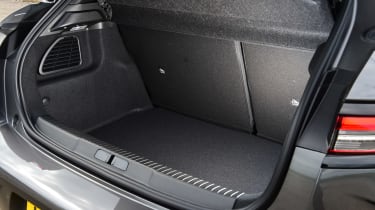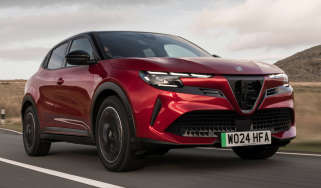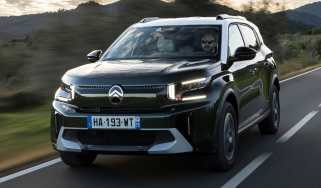DS 3 review - Practicality & boot space
Despite its SUV billing, the DS 3 isn't any more practical than a family hatch
It might be an SUV, but the DS 3 is one of the least practical models in its class, struggling to manage four occupants and all their luggage. Even visibility – usually an SUV selling point – is rather limited by the styling of the 'floating' roof design, with thick rear C-pillars.
DS 3 interior space & storage
If you're a fan of functional, utilitarian models like the Suzuki Jimny, look away now before we mention the flush-fitting door handles that deploy as you unlock the car. They are more than just a gimmick though, reducing drag at high speeds. Once inside, there's plenty of room in the front, but the back seats are slightly more cramped. You access them via narrow doors, and the high floor makes it easy to trip, so it's unlikely to be a great option for anyone with restricted mobility.
While on paper the DS 3 ticks a lot of practicality boxes, some prove frustrating in practice. The cup holders are awkwardly positioned behind the gear lever, the door bins are on the small side and its wireless phone charger can’t accommodate some of the bigger handsets on the market – issues you won’t find in a Skoda Kamiq.
Boot space
The boot measures 350 litres, which is around 100 litres down on the MINI Countryman and Volkswagen T-Roc. There's also a loading lip to lift items over, and when folded down, the rear seats create a step in the boot floor that will likely snag bulky items. You get as much luggage space as a Volkswagen Polo or SEAT Ibiza.
Towing
Most versions of the DS 3 can tow a braked load of 1,200kg (640kg unbraked), which should be enough for a small to medium-sized caravan. The electric E-Tense model cannot be used to tow, however. It’s also not the most accomplished tow car in its class, with the Volkswagen T-Roc being able to tow up to 1,700kg when four-wheel drive is fitted.
Which Is Best?
Cheapest
- Name1.2 HYBRID 145 Pallas 5dr e-DSC
- Gearbox typeSemi-auto
- RRP£32,680
Most Economical
- Name1.2 HYBRID 145 Pallas 5dr e-DSC
- Gearbox typeSemi-auto
- RRP£32,680
Fastest
- Name1.2 HYBRID 145 Pallas 5dr e-DSC
- Gearbox typeSemi-auto
- RRP£32,680












